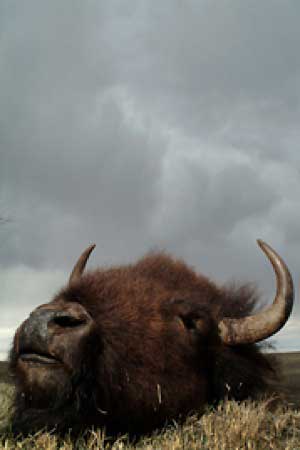About Us

Photo by Russel Daniels
Through the Bureau of Indian Affairs, the federal government influences the lives of American Indians in a way that is unlike its involvement with any other group in the U.S.
With dozens of departments, which vary from law enforcement to real estate, the BIA’s wide-ranging role in Indian Country has played a part in the lives of many Montana Indians.
Who inherits, purchases or leases much of the land on reservations requires approval from the BIA. What level of law enforcement will be provided to establish justice and help resist the further spread of drug use in Indian communities hinges heavily on decisions regarding the BIA. And when economic gain is sought from developing natural resources or tribes decide how to use federal funding, a lasting presence is once again sustained by the BIA.
This in-depth report by journalism students at the University of Montana looks at these topics and others, while illustrating how the BIA affects people who live on six of the state’s Indian reservations.
Because the government of the Confederated Salish and Kootenai Tribes runs most of the programs that the BIA frequently oversees, coverage of the Flathead Reservation is not included in this year’s Native News tab.
In the mid-1970s, these tribes entered a self-governance compact under the Indian Self Determination and Education Assistance Act, and since then, the BIA’s place among the Indian people who live close to Flathead Lake has decreased considerably.
We have, instead, turned our attention to the Little Shell Chippewa Indians of central Montana. This tribe had remained landless from more than a century until this spring when Gov. Brian Schweitzer signed a bill granting them a ten-year lease on land near Moroney Dam. During this turning point in the Little Shell’s history, the tribe will continue their pursuit to gain federal recognition, a status that would establish a closer link between its people and the BIA if granted.
The ties that bind, however, are often taut with a tension that stretches through the agency’s 182-year history. With its roots in the Department of War and a century when the U.S. government committed grave acts of violence against hundreds of Indian tribes, the BIA has evolved into an institution that exists to serve Indian people, though sometimes with a limited staff and limited funding.
“Just like you, when we think of these misdeeds and their tragic consequences, our hearts break and our grief is as pure and complete as you,” said Kevin Gover, former director of the BIA, in a 2000 speech. “We accept this inheritance, this legacy of racism and inhumanity. And by accepting this legacy, we accept also the moral responsibility of putting things right.” – Mary Hudetz and Kristine Paulsen
Acknowledgments
The Native News Honors Project is reported, photographed, edited and designed by students at the University of Montana School of Journalism. This is the 16th annual edition of Montana Indians.
Financial support for this project was provided by the John S. and James L. Knight Foundation, the McCormick Tribune Foundation, the University of Montana School of Journalism, and the UM Davidson Honors College.
The School of Journalism also appreciates the advice and counsel for this project received from Professor Richmond Clow of Native American Studies at UM; Rob McDonald, Tribal Communications director for the Salish and Kootenai Tribes of the Flathead Reservation; Donna McCrea, head of archives at Mansfield Library; Bruce Ely, staff photographer at The Oregonian, and Courtney Lowery, managing editor of New West.